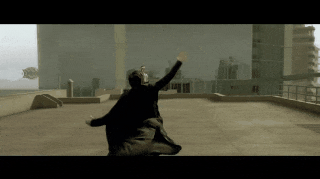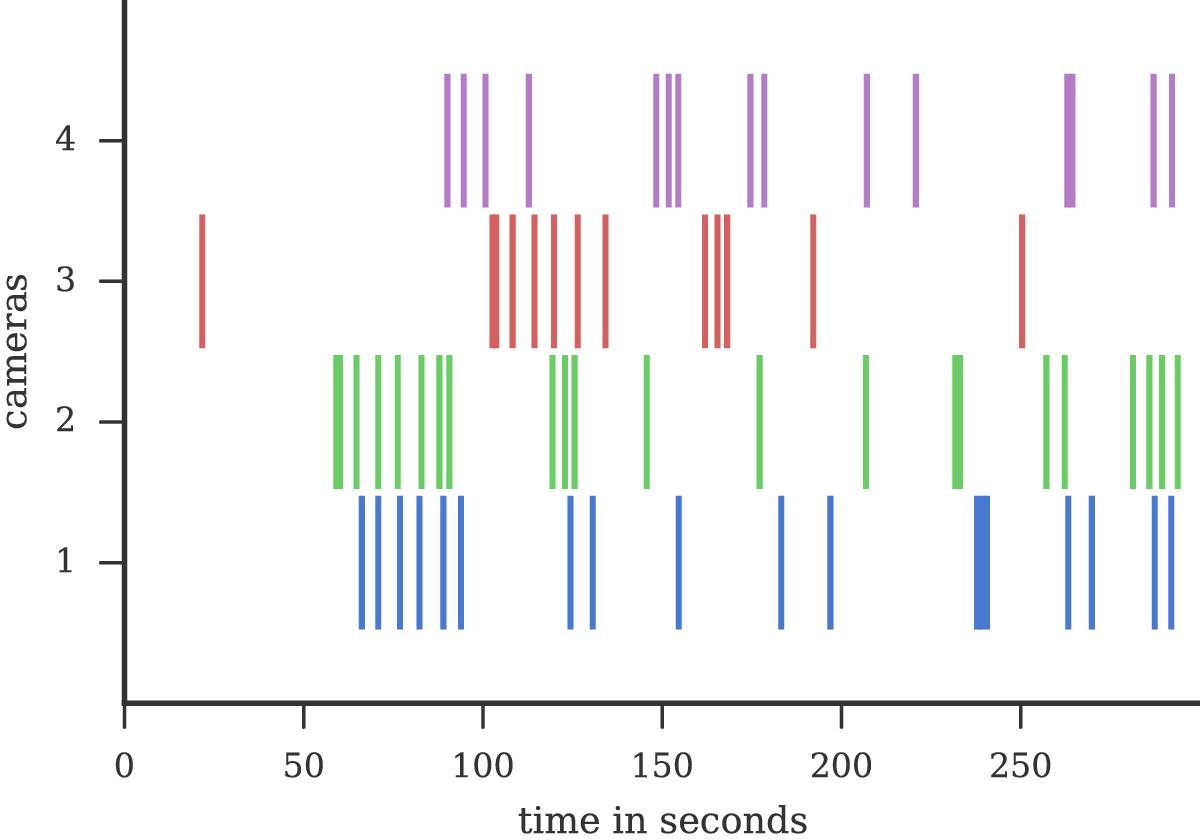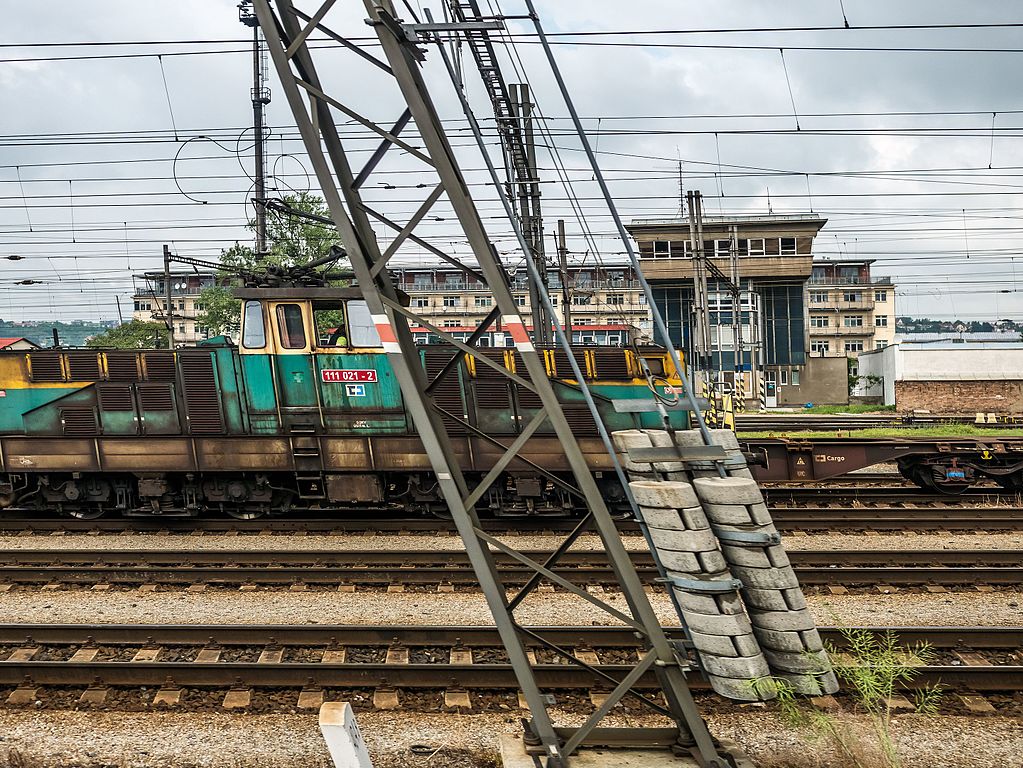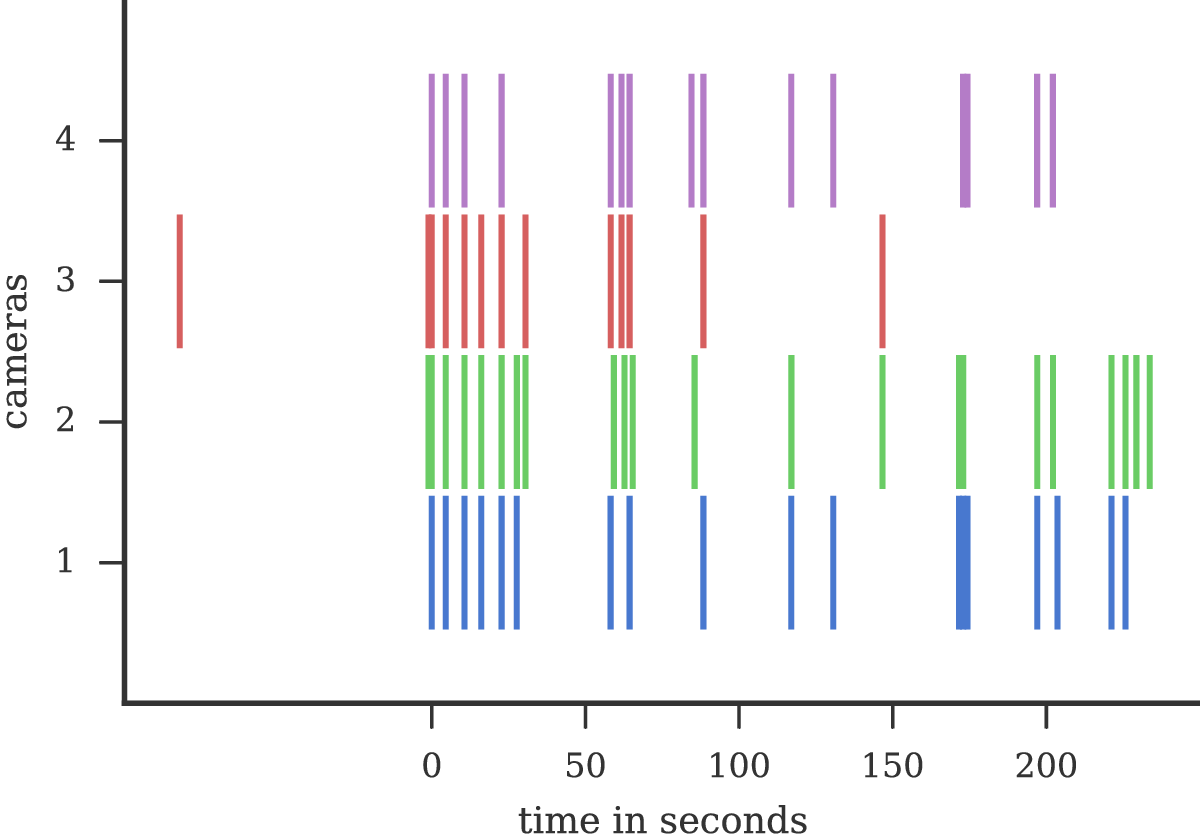Speaker Notes
Press s to open speaker notes. The sole presentation was not intended to be self contained.
Rolling Shutter Camera Synchronization with Sub-millisecond Accuracy
Matěj Šmíd, Jiří Matas
Center for Machine Perception
Czech Technical University Prague
smidm@cmp.felk.cvut.cz

Multiple Cameras
- are common
- synchronization is required
- are the only solution for some applications

Tracking Application
Ice Hockey Dataset
The Core Idea
synchronize using lighting changes affecting the whole scene

image overlap not required (!)
Detected Events

Synchronization by Mapping Frames
- choose reference camera
- synchronize by adding \(n\) whole frames
- assumption: same fps
- \(f_\mathrm{ref} = f + n\)
- \(f_\mathrm{ref}\) reference camera frame nr.
- \(f\) second camera frame nr.
Doesn't work
Frame Drops
- common phenomena
- often ignored
- cause: high load, lost packets
- synchronization error cumulative
Video Timing
$ ffprobe -select_streams v
-show_entries frame=
best_effort_timestamp_time
video.mp4
frame,0.000000
frame,0.040000
frame,0.080000
frame,0.120000
frame,0.160000
frame,0.200000
frame,0.240000
frame,0.280000
frame,0.320000
frame,0.360000
frame,0.400000
frame,0.440000- use frame timestamps instead of indices
- available:
- video containers
- streaming protocols
- why is it ignored?
Timestamp based Sync
- fps invariant, frame drops resistant
- \(\color{red}{t}_\mathrm{ref} = \color{red}{t} + \Delta \color{red}{t}\)
- \(t\) frame timestamp
- \(\Delta t\) time shift
Rolling Shutter
- frame rows not exposed simultaneously
- small delay between consecutive rows
- disadvantage: image distortion
- advantage: high-speed optical line sensor
Distortion

Lighting Change

- e.g. flash, room light switch
- profile: line-wise median, difference between consecutive images
Going Sub-frame
- we can associate time of a row in arbitrary camera to a time of a row in the reference camera
- \(t'_\mathrm{ref} = t + \color{red}{r T_\mathrm{row}} + \Delta t\)
- \(r\) row number
- \(T_\mathrm{row}\) time per row
Doesn't work precisely
Clock Skew
- millisecond scale + image sensor clock generator inaccuracy
- compensation needed (\(\beta\))
- \(t''_\mathrm{ref} = \color{red}{\beta} t + r T_\mathrm{row} + \Delta t\)
- \(\beta\) relative clock skew to the reference camera
Sync Parameters
- lighting event \((t, r)\) frame time, row pair
- pair of corresponding events in 2 cameras = 1 equation
- system of linear equations
- least squares solution


Results
Results

- residual errors < 1ms
- ice hockey dataset, 5 minutes, 4 cameras
Open Source
import flashvideosynchronization
sync = flashvideosynchronization.FlashVideoSynchronization()
sync.detect_flash_events(filenames)
matching_events = {1: 3, 3: 2, 2: 8, 4: 2}
offsets = {
cam: sync.events[cam][matching_events[cam]]['time']
for cam in cameras}
# synchronize cameras: find parameters of transformations
# that map camera time to reference camera time
sync.synchronize(cameras, offsets, base_cam=1)
# get sub-frame sychronized time for camera 1, frame 10 and row 100
print sync.get_time(cam=1, frame_time=timestamps[1][10], row=100) https://github.com/smidm/flashvideosynchronization
Summary
- sub-millisecond accuracy for rolling shutter cameras
- requirement: global detectable lighting changes
- open source
http://cmp.felk.cvut.cz/~smidm/flash_synchronization